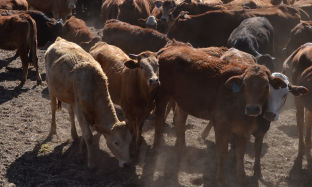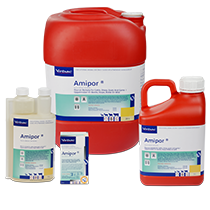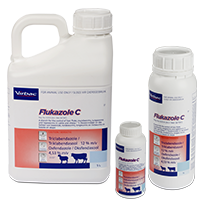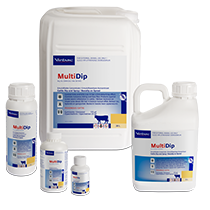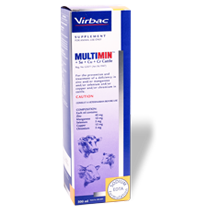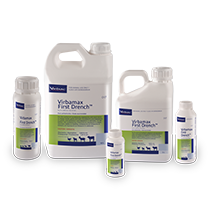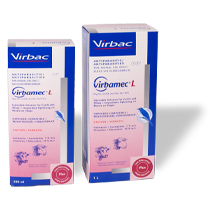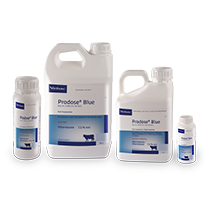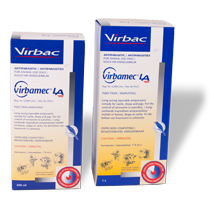
Preparation of calves for weaning
Weaning time is "harvest time" on a commercial beef cattle farm. We should do everything in our power to make this action as smooth as possible. This involves the timely consideration of actions to facilitate the weaning process and to negotiate the best possible price for your calves.
Weaning process itself
The weaning process, no matter what method is used, puts tremendous stress on the calves. At weaning (± 7 months), the contribution of the cow's milk to the calf's nutrition is very limited, but the bond between the cow and the calf is still strong. Low-stress weaning techniques support good animal welfare and disease prevention in newly weaned calves, with concomitant reduction in the use of antibiotics.
The use of “2-stage” weaning techniques places the least strain on the calves. The system that most likely causes the least stress is the use of "weaning nose rings" in the calves, while they are still kept with the cows. The nose ring makes it difficult for the calf to drink, as it "tickles" the cow when the calf tries to suckle and she does not stand still. After a few days the calf will then stop trying and the calf is then weaned. Nose rings must be inserted at least 10 days before the planned weaning date and then removed again on the day of weaning. Although nose rings have a cost factor, they are reusable. (time, labor, cost vs reduced weaning shock?)
With the weaning technique where calves and cows are separated and kept in adjacent camps (with a very good fence in between) before they are finally separated, weaning shock is also reduced.
The weaning process that puts the most stress on the calf is where the calves are weaned directly from the cows and transported to an auction, feedlot or back rounding facility. Other methods such as: keeping the calves in a (good) pen with food and water until they stop looking for the cows (cows must be taken out of earshot of calves); the “exchange” of cows and calves of different herds (herds should not be within earshot!); or whatever method is most practical for the specific circumstances can also be used.
No matter what method is used, plan ahead to have everything ready to make the weaning process as smooth as possible.
Vaccinations
Calves should at least been given a blackleg, botulism and anthrax vaccination before weaning, as well as the booster dose of blackleg and botulism. The calves (especially those held back as replacement heifers), should preferably be pre-vaccinated against contagious abortion (CA) if the S19 vaccine is used. If the RB51 vaccine is used, the heifers can be vaccinated as soon as possible after weaning. (To get the best possible protection, RB51 should be repeated twice more after weaning before first breeding).
There are also other vaccines that can be administered pre-weaning, especially if the local conditions or the feedlot to which the calves are sold require it, and a premium can be negotiated on the selling price. BVD, IBR and Pasteurella are probably the most important in reducing post-weaning disease-related illnesses. When calves are bawling and weaned in dry and dusty conditions, the chances of the occurrence of respiratory diseases increase.
Trace mineral and vitamin supplementation
During stressful conditions, adrenaline / cortisol levels are elevated, which can put the immune system of calves under pressure. This can lead to the calves getting sick more easily. Trace minerals play a very important role in the maintenance of the immune system. The supplementation of injectable trace minerals during pre-weaning can increase the effectiveness of vaccines. It is therefore critical that calves with pre-weaning vaccination, or at least 4-6 weeks before weaning, receive an injectable trace mineral and vitamin supplement to support the immune system. The importance of this will be discussed in a separate article.
Parasite control
Calves are most easily affected by internal parasites. Weaning mass can be increased if internal parasites are controlled pre-weaning as well as reducing the stress at weaning.
The control of external parasites is important to ensure optimal growth and reduce the chances of tick-borne diseases - especially when calves are under weaning stress and their immunity is under pressure. In addition, calves must be sold tick-free - especially when they are offered at auction. If calves are not tick-free, the sale of calves at an auction may be refused.
Selection of replacement heifers
It is important to select the replacement heifers before marketing (weaning). If selection pressure is placed on fertility, heifers should first be selected from cows that calved themselves early in the calving season - without these cows skipping the previous calving season !! If possible, also keep more heifers than is needed - to apply selection pressure on fertility with first mating.
Marking of calves
By law, calves must be branded (or tattooed) by 6 months of age. This action can also be combined with some of the other actions like vaccination and trace mineral supplementation to reduce handling.
Contact your nearest VIRBAC Technical Sales Advisor for more information regarding applicable Virbac products.

